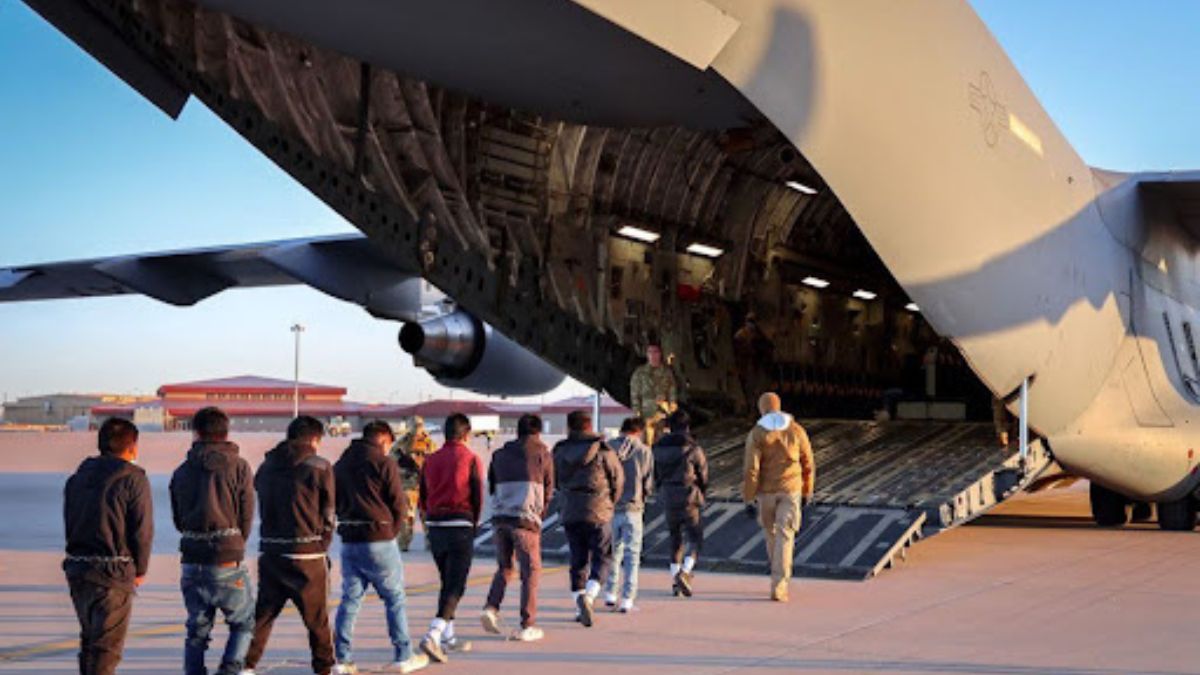TECHNOLOGY
Low Code vs Traditional Development: Which One Wins for Scalability?

Gone were the days when developers would be spending their valuable time writing hundreds of lines of code and transferring logic into convenient solutions by using traditional development methodologies. All such efforts help businesses increase their operational efficiency and reduce costs. Now, the entire software development industry is moving towards adopting new technologies and trends to improve the scalability and effectiveness of software solutions.
You will get hundreds of articles on emerging technologies in software development or software development trends; you will find some common trends in all of these articles. Low code development is one of those most frequently discussed trends in software development. But why? Why is Low-Code trending? Does it work, and is it better than traditional development? We’ll discuss all of these questions in this head-to-head comparison guide on low code vs. traditional development. The benefits and drawbacks of using low-code or traditional development are what we are going to discuss, which will provide you with a clear insight into which software development approach is most suitable for your business.
What is Traditional Software Development?
The traditional development process involves coding manually in languages such as Java, Python, or C#. This is done through manual code, for this business needs to hire software developers with proficient programming skills who can create custom code to develop tailored applications and provide complete control over their capabilities. Additionally, they maintain full visibility and scalability. Specifically, this approach is intended for sophisticated, efficient, business-critical software solutions that demand significant customization and integrations.
Ideal Use Cases:
- Enterprise applications
- High-security systems
- Complex integrations
What’s Low-Code and No-Code Development?
It’s important to understand the distinction between low-code and traditional development before comparing them. I know we are discussing low code vs traditional development, but when we talk about low code, it’s equally important to understand no code also.
No-Code Development
The no-code architecture allows to development of software or code for everyone, even those who don’t have enough technical expertise, because it is completely codeless. The use of graphical user interfaces allows for the creation and deployment of software solutions through drag-and-drop elements. Platforms are typically unencoded and utilized for simpler applications, such as internal processes, mobile apps, and websites. Enterprise-level solutions often lack the flexibility and scalability of no-code platforms, which are not worth considering due to their ease of use.
Ideal Use Cases:
- Simple business applications
- Website and mobile app development
- Internal process automation
Low-Code Development.
In contrast, low-code systems are somewhat more technical and demand some coding skills. These platforms provide developers with pre-made components and templates that can be utilized to accelerate development. While not entirely code-free, low-code development reduces the need for manual coding. It’s fitting for constructing business process automation systems, enterprise applications, and tailored workflows.
Ideal Use Cases:
- Business process automation
- Enterprise applications
- Custom workflows with some technical customization
No-code development is codeless, making it ineffective for creating flexible, scalable software. A No-Code solution is undoubtedly not that effective for businesses looking for scalability. Nevertheless, low code is a more adaptable, flexible, changeable and reliable software development method; therefore, businesses face a dilemma whether they should try low code development or continue with traditional approaches. The misunderstanding is legitimate, which is why the guide on low code versus traditional software development is designed to help you determine which software engineering approach is mot suitable for your next project.
How Does Low Code and Traditional Development Differ From Each Other?
Low code vs traditional development, this comparison requires consideration of various factors, such as coding requirements, speed, scalability, and customization. Listed below are the key characteristics of each approach:
This is the main and basic difference between low-code and traditional software development; now, let’s examine the strengths and weaknesses of both so you can decide which one to choose.
Strength and Weakness Analysis For Low Code vs Traditional Development
Low Code Development
Strengths:
- Enhanced development speed is achieved through the use of pre-built components, drag-and-drop tools, and automation to reduce time spent on development.
- Decreased technical barriers enable non-technical users (such as business analysts or project managers) to contribute to the development of the application.
- A cost-effective approach is used for the short term, as less skilled developers are required and fewer people are needed to handle development work.
- Rapid prototyping facilitates businesses in testing ideas, creating MVPs, and verifying them before they are executed.
- Rapid adaptation to changing business needs is made possible by business agility without the need for extensive redevelopment.
- Low-code platforms often come with pre-installed security features, which can decrease the effectiveness of security setup efforts.
Weaknesses:
- Complicated custom features are difficult to implement due to platform constraints limiting customization.
- This may be hindered by the need to manage large datasets, traffic, or enterprise-level system requirements. That’s why it lacks scalability.
- Deficiencies in security are determined by the platform provider, which means that businesses have little control over encryption protocols or data privacy and compliance.
- The lack of ease in transferring applications built on proprietary low-code platforms to other environments is a significant drawback.
- The performance of pre-built modules may be compromised, resulting in slower performance when used in high-performance scenarios.
- It does not allow for easy integration with legacy systems or third-party APIs outside the platform’s ecosystem.
Traditional Software Development
Strengths:
- Developers have complete control over design, functionality, and performance optimization with full customization.
- Ideal for enterprise-level systems that manage large amounts of data and complex transactions.
- Companies can establish their own security systems, which will ensure compliance with industry standards. Best in providing advanced security & compliance.
- Companies can maintain their codebase and infrastructure independently from third-party providers, without the need for vendor lock-in.
- Integrate easily with any database, API, cloud service or legacy system. Flexible Integration.
- It enables optimized performance, ensuring your applications are optimized for speed, reliability, and large-scale operations.
Weaknesses:
- Personalized programming results in extended development times.
- Requires skilled developers, coupled with rising costs for hiring and operation.
- Organizations require dedicated resources for software updates, debugging, and long-term maintenance.
- A stutter learning curve and input are limited to non-technical users.
- Older applications require longer to adapt compared to low-code solutions.
Depending on your business, which one would be the better option – Understand with Situational Examples
Low code offers speed and cost savings, while traditional development provides flexibility and control, This makes it difficult for businesses to choose between low code and traditional development. When it comes to software development, a balanced approach can provide the best outcome. Let’s understand when to go for low code and traditional development with some situation-based example.
Scenario for Low-Code Development
Consider a mid-level retail business that wants to automate its inventory management system. This company needs a solution that reduces human error and helps it track its stock. Why is this? A low-code platform can be utilized to quickly create and deploy an application, with minimal coding required by the company, in tandem with its current e-commerce system. This approach provides a cost-effective and quick solution that addresses the company’s immediate needs.
Scenario for Traditional Development
If any major bank wanted to create a secure, flexible online banking system that could handle millions of transactions daily, it would need custom-made security, compliance with regulatory requirements, and integration with legacy systems. In this case, traditional development is preferable as it allows full management of the application’s security, performance, and scalability aspects.
Addressing some common questions to avoid the dilemma of choosing between low code and traditional development.
Why are low-code platforms less suitable for scalability compared to traditional development?
Rapid development and prototyping are not feasible on low-code platforms, making them unsuitable for scalability. The complexity of low-code platforms may increase due to high traffic, complex transactions, and intricate integrations. This can be problematic for some applications.
Nevertheless, traditional advancements are more versatile. The architecture and performance of an application can be managed by businesses to create apps that have the capacity to accommodate millions of users, process massive amounts of data (such as emails), and integrate with complex systems.
What is the key difference between security and compliance in low code vs traditional development?
The platform provider typically takes charge of security and compliance in low-code development, which can restrict access to sensitive data and restrictions. Despite the presence of built-in security features, these platforms may not always meet the security standards required by specific industries like finance or healthcare.
In traditional development you can choose the best software development partner who can guarantee your business businesses with complete control over security measures, including encryption, authentication, and regulatory compliance.
Final Thoughts: Which One Wins for Scalability?
Traditional development has the greatest potential for expansion. Despite their ability to deliver low-code development, these platforms are unsuitable for demanding enterprise-level systems and may offer slow performance. Businesses with extensive requirements can rely on traditional development for full customization, scalability, and performance protection.
Businesses can utilize low-code platforms to achieve rapid and cost-effective growth. But for those seeking long-term flexibility, security, and full customization, traditional development is the way to go. A hybrid approach that allows businesses to use low-code platforms for rapid prototyping and automation while still retaining traditional development for core systems and scalability is recommended. This approach helps businesses determine their specific requirements and achieve them successfully.
TECHNOLOGY
Why ICE Still Shows Up at 5 AM: A Look at Deportation Myths in 2025

There’s something universally unsettling about an early-morning knock at the door. It could be a neighbor with good intentions, a package gone missing, or—if you’re undocumented or in a legal gray zone—it might just be Immigration and Customs Enforcement (ICE). In Kansas City and across the U.S., that 5 AM knock has become a symbol of anxiety, confusion, and an immigration system that often feels more like a maze than a roadmap.
As someone who has been deeply involved in immigration law for years, I’ve watched this fear rise, evolve, and solidify into a myth. But here’s the twist: not all of it is myth. ICE does show up. The reasons behind those visits, however, are far more layered—and in many cases, avoidable—with the proper legal guidance.
Let’s talk about what’s true, what’s not, and why a well-timed strategy (preferably not served with coffee at dawn) might just save lives.
What ICE Really Does (and What It Doesn’t)
Let’s clear something up early: ICE is not out to grab every foreign-born person in Kansas. That may sound like a relief, but it comes with its own set of challenges. The agency has two core missions: homeland security investigations and enforcement, as well as removal operations (ERO). It’s the latter that brings them to doorsteps, workplaces, and—yes—occasionally churches in search of individuals who have violated immigration law.
If you ask any immigration lawyer in Kansas City, they’ll tell you that the stories vary wildly. I’ve had clients detained because of a missed court date from 12 years ago. I’ve also seen others suddenly targeted after applying for benefits or even volunteering for fingerprinting at a visa renewal. What sets MIL—Midwest Immigration Law—apart is that we don’t just see a case number; we know a person, a story, and a system full of loopholes we can work with.
From Raids to “Knock and Talks”: How Tactics Changed
In 2018, under the Trump administration, ICE raids gained renewed national attention—operations like “Cross Check” netted thousands, often sweeping up people with minor infractions. But post-2020, things changed. Under the Biden administration, ICE has primarily shifted to “targeted enforcement,” focusing more on individuals deemed a national threat or those with criminal records.
That sounds nicer, but here’s the reality: if you’re undocumented and your address is on file—say, from a previous application—ICE doesn’t need a warrant to show up and ask questions. It’s called a “knock and talk,” and it’s legal in most cases. The catch? You don’t have to open the door. Knowing that tiny legal fact is often what separates deportation from staying put.
This is where the experience of an immigration lawyer in Kansas City becomes a game-changer. At MIL, we’ve seen cases where clients didn’t even know they were being targeted until a polite but firm voice said, “We’re with ICE” through a crack in the door.
Global Perspective: How Other Countries Handle Deportation
Let’s zoom out for a minute. While ICE has become infamous globally, other nations handle deportation with wildly different approaches. In Canada, for instance, the Canada Border Services Agency (CBSA) typically gives ample notice and multiple chances for voluntary departure. In Germany, deportations are publicly documented and often scheduled after numerous appeals have been made and failed. Even in Australia—known for its strict immigration stance—detentions are more readily provided, and legal aid is more readily available.
Contrast that with the U.S., where even asylum seekers can be detained without warning. And don’t get me started on the 2024 case in Illinois, where ICE detained a university professor due to a paperwork error despite holding a valid H-1B visa. That case made international headlines—and not in a good way.
Here in Kansas City, we’re not immune to these systemic cracks. If anything, our geography—straddling major interstate corridors makes us a high-activity zone for enforcement. That’s why working with seasoned professionals at Midwest Immigration Law (MIL) isn’t just smart; it’s a survival strategy.
A Growing Issue: Deportations Without Convictions

One of the most misunderstood realities in 2025 is that a criminal conviction is not always a prerequisite for deportation. Immigration is a civil, not criminal, matter—so even those who’ve never committed a crime can be placed in removal proceedings. It’s a harsh truth that most outside the legal field don’t realize until it’s too late.
This is one of the most painful parts of my job. I’ve seen clients—some who have lived here for decades, built families, and paid taxes—taken away because of overstays, visa technicalities, or bad legal advice years ago. And while we fight hard at MIL to undo those errors, time and paperwork rarely move fast enough.
An immigration lawyer in Kansas City will often need to file motions to reopen, stay orders, and pursue prosecutorial discretion just to buy time. It’s not cheap, but MIL has earned a reputation for keeping costs reasonable, especially for families who need every dollar to make ends meet.
How Tech Companies and Data Fueled the Problem
Here’s something that rarely gets discussed: Big Tech’s quiet role in ICE’s evolution. Palantir, a company founded by Peter Thiel and backed by the CIA, has long supplied data aggregation tools to the Department of Homeland Security. These tools pull from DMV records, social media, utility bills, and even school records—compiling profiles of non-citizens and their families.
In 2021, reports surfaced that Clearview AI, a facial recognition startup, was scraping social media images to assist in identification. That technology was trialed in multiple ICE field offices. So when someone says, “How did they even find me?” well, it’s not always rocket science. Sometimes it’s Facebook.
This should terrify you, and it should also make you extremely choosy about your legal representation. At MIL, we stay updated on not just laws but the tools used to enforce them. We don’t chase fear—we chase facts.
Deportation Isn’t Just a Trip Home—It’s a Legal Void
One of the greatest misconceptions about deportation is that it’s a simple process of going back home. It’s not. Once deported, reentry is often banned for years, sometimes permanently. That means no reunions, no second chances, and usually, no hope. Worse, the deportation process itself is riddled with due process failures.
In 2023, Human Rights Watch reported that over 30% of detained immigrants lacked access to legal representation during removal proceedings. In Kansas and Missouri, the numbers are even higher in rural counties. That’s unacceptable—and exactly why MIL’s outreach efforts have expanded to offer consultations beyond city limits, reaching towns where immigration lawyers are nearly nonexistent.
If you’ve read this far and still think ICE knocking at dawn is just a scare tactic, you’re mistaken. It’s real. But so is a legal defense. So are case dismissals. So is hope.
The Quiet Success Stories You’ll Never Hear About
Something is maddening about how the news only seems to focus on immigration failures. We all see the viral clips: crying children, overcrowded detention centers, and courtrooms where translators are nowhere to be found. What you won’t see? The growing number of victories happening right here in Kansas City—many of them thanks to long-shot legal strategies that paid off.
I once worked on a case involving a young Guatemalan man who had been detained for overstaying a student visa for three months. He had no criminal record, was working under the table to support his family, and had just applied for a marriage-based green card. ICE detained him before the application was reviewed. The system had decided his fate—but we hadn’t.
Midwest Immigration Law stepped in, filed a request for deferred action with solid humanitarian arguments, contacted congressional liaisons, and secured a release within 10 days. The case was eventually dismissed after USCIS reviewed and accepted the pending green card paperwork. It wasn’t just law; it was timing, knowledge, and pressure—applied with precision.
This isn’t uncommon for an immigration lawyer in Kansas City, especially one with MIL’s experience. Our team has quietly established a reputation for handling cases that other firms won’t touch, often at far more affordable rates than you’d expect. We work with people, not price tags.
The Flaws in “Catch and Release” (And Why It’s Still Happening)
Despite being a talking point in every primary immigration debate since 2005, “catch and release” is still very much a real thing. The concept sounds like a fishing trip, but it is anything but relaxing. In practice, it refers to releasing undocumented individuals with a court summons instead of holding them in detention centers.
Critics call it too soft. Immigrant advocates call it necessary. The truth is murkier. In Kansas City, where court backlogs are measured in years—not months—those released might wait up to five years for a hearing. That limbo causes immense stress, blocks work permits, and slowly tears apart families, rather than doing so suddenly.
And yet, without the resources to detain everyone, ICE continues to use this strategy. The problem is that without proper legal support, most of these individuals miss crucial updates, deadlines, or address change notifications. They’re then flagged as “fugitives” even when they’re not hiding—they simply didn’t know they had missed a court notice sent to an old address.
That’s where an immigration lawyer in Kansas City becomes more than just representation. We become translators of bureaucratic madness, strategists against a moving target, and—when needed—the emergency contact that saves the day.
Deportation Defense in the Age of AI and Automation
Here’s a fun fact, if you can call it that: in late 2024, ICE began experimenting with AI-assisted threat profiling based on a contract with a little-known tech firm called Paragon Risk Systems. Using predictive behavior algorithms, the agency is now testing a system that ranks immigrants by “risk factor” based on incomplete datasets—like unpaid traffic tickets, inconsistent addresses, or even frequent international calls to “high-risk” countries.
This type of automation has raised eyebrows globally. Amnesty International and the ACLU have both condemned these systems for their opaque criteria and racial bias. Europe, by contrast, has legally restricted immigration decisions based on automated profiling. But here in the U.S.—and specifically in Kansas—there’s no apparent oversight on how such tools are used or challenged.
At MIL, we’ve begun requesting complete case files under the Freedom of Information Act (FOIA) just to uncover whether the algorithm profiled a client. Spoiler: Sometimes, they were.
This is the future we’re facing—where machines make assumptions, and lawyers like us spend months cleaning up the fallout. So, if you think immigration law is all dusty files and courtroom drama, think again. It’s becoming a Silicon Valley arms race, with human lives serving as beta testers.
When Deportation Leads to Exile
Let’s talk about the long game. Being deported isn’t just a logistical nightmare—it can become a life sentence of exile. Many people don’t realize that once you’re formally removed, reentry bars are triggered. For most cases, it’s 10 years. For some, it’s permanent. And the waivers to reduce that ban? Paperwork is so complex it makes the IRS look like a lemonade stand.
These rules were designed decades ago, during a time when immigration was viewed through a very different lens. They haven’t caught up to the realities of modern global movements, binational marriages, or humanitarian crises. More than 22,000 people deported from the U.S. in 2024 were parents of U.S. citizen children. That’s not just a policy failure—it’s a moral one.
At Midwest Immigration Law, we’ve made it part of our mission to fight these long-term consequences wherever possible. That might mean pursuing waivers, reopening old cases, or using newly introduced prosecutorial discretion policies to close a case altogether. We don’t promise miracles. However, we promise that every angle will be explored, regardless of how complex the story may be.
The Human Side Kansas City Doesn’t Always See

Let’s bring this closer to home. Kansas City isn’t just a flyover country when it comes to immigration. It’s become a surprising hub for new arrivals from Africa, Latin America, and Southeast Asia—particularly refugees and asylum seekers. In fact, between 2020 and 2024, Kansas experienced a 42% increase in refugee placements, outpacing its neighboring states, thanks to improved housing affordability and a growing network of nonprofits and faith-based organizations.
But this growing diversity also strains legal resources. There are too few immigration attorneys per capita, especially outside metro areas. That’s part of why MIL’s team travels—not just to courtrooms but to rural towns where no one else is showing up. It’s also why we keep our pricing reasonable and payment plans flexible, because legal protection shouldn’t be a luxury item.
And if you ask an immigration lawyer in Kansas City, what is the biggest challenge? It’s not ICE—it’s misinformation. From YouTube influencers peddling fake green card hacks to shady “notarios” offering legal advice without a license, bad guidance has ruined far more lives than the government ever could.
Ending With Straight Talk (And a Bit of Hope)
So let me end this the way I started—honestly. Yes, ICE still shows up at 5 AM. Yes, the system is flawed, sometimes cruel, and often absurd. But here’s what else is true: people win. Cases get closed. Families stay together. And Kansas City, for all its complexities, is home to one of the most resilient immigrant communities I’ve ever worked with.
At Midwest Immigration Law, we’re not superheroes—but we’re fast, experienced, and not afraid of messy cases. Whether it’s filing a last-minute stay of removal or undoing a decades-old mistake, we show up when others won’t.
And if you’ve read this far, you already know that staying informed is half the battle. The rest? That’s where we come in.
Learn more about Midwest Immigration Law services—because in a world of noise, MIL does it right.
TECHNOLOGY
iCostamp: Decoding, Understanding, and Utilizing This Technology

In a digital-first world where technology evolves rapidly, a new term has started to capture attention across tech and business spaces: iCostamp. Although still unfamiliar to many, iCostamp is poised to become a transformative element in various industries, especially in document authentication, digital transactions, and cost tracking.
This comprehensive guide explores what iCostamp is, how it works, its core technologies, and how it can be effectively utilized in modern business and tech ecosystems.
What Is iCostamp?
iCostamp is a conceptual or emerging technological framework that appears to blend two core ideas: “intelligent cost” and “timestamping.” At its essence, it refers to a smart, verifiable digital system for stamping or recording cost-related events in a secured, time-sensitive manner.
Whether used in blockchain environments, enterprise resource planning (ERP) systems, or logistics chains, iCostamp provides a mechanism to accurately log and validate the cost of transactions or processes at precise moments in time.
Think of it as a digital receipt that’s:
-
Tamper-proof
-
Time-locked
-
Context-aware
-
Cost-specific
The Core Components of iCostamp Technology
To understand iCostamp better, we must examine its core building blocks. These are the foundational technologies or systems that make iCostamp functional and valuable:
1. Timestamping Protocols
iCostamp integrates timestamping — a technique that digitally records the time at which a specific event occurred. This ensures chronological integrity and is widely used in:
-
Blockchain transactions
-
Digital notarization
-
Compliance audits
2. Cost Encoding Systems
The “cost” component refers to monetary values or resource expenditure, which can include:
-
Unit pricing
-
Resource allocation
-
Energy consumption
-
License usage fees
iCostamp encodes these values into the digital record along with contextual metadata.
3. Digital Signature Integration
To ensure authenticity and prevent tampering, iCostamp often incorporates cryptographic signatures. This verifies the identity of the sender and ensures that the content remains unchanged.
4. Smart Contract Compatibility
In blockchain and Web3 applications, iCostamp can be integrated into smart contracts to automate payments, monitor cost milestones, or trigger cost-based events.
Applications of iCostamp Technology
iCostamp’s versatility makes it suitable for a wide range of industries and use cases. Let’s break down some of the most promising applications:
1. Finance and Invoicing
Businesses can use iCostamp to:
-
Log and verify invoices
-
Prevent duplicate or fraudulent billing
-
Create an immutable ledger of financial transactions
This adds transparency and traceability to every transaction made.
2. Supply Chain and Logistics
In shipping or manufacturing, iCostamp can track:
-
Cost of transportation at each checkpoint
-
Currency conversion at different stages
-
Resource consumption with timestamped documentation
This helps companies optimize operations and reduce costs.
3. Digital Asset Management
For NFT markets, SaaS subscriptions, or online marketplaces, iCostamp allows platforms to:
-
Timestamp licensing fees
-
Verify proof of purchase
-
Log recurring costs for users or assets
4. Energy and Utility Billing
Utilities can use iCostamp to record:
-
Peak vs. off-peak usage costs
-
Time-of-use energy consumption
-
Real-time billing with user consent
This leads to more transparent billing systems for consumers.
5. Legal and Compliance
iCostamp is also ideal for regulatory environments where timestamped financial data is critical. It helps:
-
Demonstrate financial compliance
-
Maintain audit trails
-
Prove the timing of contractual cost obligations
iCostamp vs Traditional Timestamping Systems
You may wonder how iCostamp differs from basic timestamping tools already available. Here’s a comparison:
| Feature | Traditional Timestamp | iCostamp |
|---|---|---|
| Time Logging | ✅ | ✅ |
| Cost Encoding | ❌ | ✅ |
| Context-Aware Metadata | ❌ | ✅ |
| Tamper-Proof | Somewhat | ✅ (with encryption) |
| Blockchain Integration | Optional | Fully Compatible |
| Use Cases | Limited | Broad and Dynamic |
Essentially, iCostamp enhances traditional timestamping by introducing cost-awareness, security, and interoperability across platforms.
Advantages of Implementing iCostamp
Adopting iCostamp in your organization or digital system can offer multiple benefits:
✅ Improved Accountability
Each transaction is tied to a cost and a timestamp, making it harder to falsify or misrepresent data.
✅ Enhanced Transparency
Clients and stakeholders can easily trace where costs were applied and when.
✅ Better Automation
In environments like smart contracts or ERP systems, iCostamp triggers cost-based logic that reduces the need for manual review.
✅ Scalable and Secure
With blockchain and API-based architecture, iCostamp can be easily scaled across multiple departments or geographies.
✅ Regulatory Compliance
Industries with strict cost-reporting standards (like healthcare, finance, or government) can use iCostamp to satisfy audit and legal requirements.
Challenges and Considerations
Despite its promising outlook, iCostamp isn’t without potential challenges:
1. Integration Complexity
Implementing iCostamp into legacy systems may require API customization and middleware.
2. Data Privacy
Since iCostamp records sensitive cost and time data, organizations must ensure compliance with data protection laws such as GDPR or CCPA.
3. Initial Investment
While cost-saving in the long term, iCostamp integration may require upfront investment in infrastructure and training.
How to Start Using iCostamp
If you’re considering adopting iCostamp, here’s how you can get started:
Step 1: Identify the Use Case
Are you tracking transactions? Managing subscriptions? Optimizing supply chains? Pinpoint where cost and time intersect in your workflow.
Step 2: Choose a Compatible Platform
Select software or blockchain solutions that support API-based iCostamp integration.
Step 3: Customize Cost Fields
Define what types of costs (e.g., monetary, energy, data use) will be stamped and how.
Step 4: Enable Real-Time Monitoring
Use dashboards and analytics to monitor iCostamp’s logs and extract actionable insights.
Step 5: Ensure Legal Compliance
Work with legal and compliance teams to ensure all data usage respects jurisdictional laws and industry standards.
Future of iCostamp Technology
As the world moves toward real-time data processing and autonomous transactions, iCostamp’s stands to play a key role. With the growth of AI, IoT, and blockchain, demand for systems that can securely and intelligently track costs is increasing.
In the near future, we can expect:
-
Wider adoption in FinTech and DeFi
-
iCostamp standards for digital documentation
-
AI-powered cost analysis tools using iCostamp logs
-
Open-source iCostamp libraries for developers
Conclusion
iCostamp is more than a buzzword—it’s a transformative technology that merges intelligent cost management with verifiable timestamps. It’s especially relevant in a time when data integrity, digital transparency, and cost accountability are more important than ever.
From finance and logistics to compliance and energy, iCostamp’s has the potential to revolutionize how organizations track, analyze, and trust their cost data. As this technology matures, early adopters will gain the advantage of greater efficiency, reliability, and foresight in their operations.
TECHNOLOGY
The Evolution of Dental Crowns: A Journey Through Technological Progress

Dental crowns have long been a cornerstone of restorative dentistry. Used to repair and protect damaged teeth, crowns restore not only functionality but also appearance. Traditionally, patients had to endure long waits, multiple appointments, and uncomfortable impressions. Today, however, advanced tools like CEREC technology have transformed this process. The evolution of dental crowns has been a journey from manual craftsmanship to high-tech precision — making the patient experience faster, more comfortable, and more reliable than ever.
The Traditional Approach: Artistry and Time
In the past, the process of getting dental crowns could span several weeks. Dentists would begin with a physical impression of the tooth using a tray filled with putty-like material. This step often triggered discomfort or even a gag reflex in patients. Afterward, the mold would be sent to a dental lab where a skilled technician would craft the crown by hand — a meticulous and time-consuming process. Once the crown was ready, patients had to return for a second visit to have it fitted and cemented. If the fit or color wasn’t perfect, further adjustments or even a remake were needed, extending the treatment time. Although the final results were often effective, the process was labor-intensive and left room for human error.
A Digital Revolution: CAD/CAM and Beyond
The first significant leap in dental crowns came with the introduction of CAD/CAM (Computer-Aided Design/Computer-Aided Manufacturing) systems. This technology brought computer precision into the dental world. Digital scanners began to replace traditional impression materials, allowing for more accurate imaging of a patient’s teeth. CAD/CAM software could then design a virtual model of the crown, which could be milled from ceramic blocks by computer-guided machines. This greatly improved both the speed and precision of crown production. Although initially limited to dental laboratories, this technology laid the groundwork for in-clinic innovation — most notably, the advent of CEREC technology.
CEREC Technology: A Game-Changer
Short for Chairside Economical Restoration of Esthetic Ceramics, CEREC technology has redefined the crown-making process. With CEREC, patients can now receive custom-made dental crowns in a single visit — often within just a couple of hours. Here’s how it works:
- Digital Imaging: A small camera scans the affected tooth, creating a highly accurate 3D model — eliminating the need for messy impressions.
- Design Software: The dentist uses CEREC’s software to design the crown on-screen, ensuring perfect shape, bite alignment, and aesthetics.
- In-House Milling: A milling unit located right in the dental office carves the crown from a ceramic block based on the design.
- Immediate Placement: After some finishing touches and color adjustments, the crown is polished, bonded, and fitted — all in one visit.
The entire process is streamlined, efficient, and much more comfortable for the patient.
Benefits of Modern Crown Technology
Thanks to innovations like CEREC technology, the experience of getting dental crowns is more patient-friendly and efficient. Some key benefits include:
- Time Savings: Single-visit crowns eliminate the need for temporary restorations and follow-up appointments.
- Accuracy: Digital impressions are more precise, reducing the risk of ill-fitting crowns and the need for remakes.
- Comfort: No more goopy molds or temporary crowns that can fall off or irritate gums.
- Aesthetics: Ceramic materials closely mimic the natural appearance of teeth, and color can be customized chairside.
- Durability: CEREC crowns are strong and long-lasting, capable of withstanding normal biting and chewing forces.
The Role of Artificial Intelligence and Future Developments
Beyond CEREC, the next wave of technology in dental crowns involves artificial intelligence (AI) and machine learning. AI-driven systems can now help detect decay, suggest optimal crown designs, and even predict long-term outcomes. Integration with intraoral scanners and cloud-based platforms allows dentists to collaborate seamlessly with labs and specialists across the globe. In the near future, we may also see biocompatible materials that better integrate with natural tissues, or even smart crowns embedded with sensors to monitor bite pressure and oral health in real time.
A New Era of Dental Restoration
The journey of dental crowns — from hand-crafted restorations to computer-designed masterpieces — is a testament to how far dentistry has come. What was once a multi-week ordeal is now a same-day, high-precision solution, thanks in large part to CEREC technology. This evolution not only enhances clinical efficiency but also transforms the patient experience. In a world where time and comfort matter more than ever, modern crown technologies offer a blend of convenience, function, and aesthetics that was unimaginable just a few decades ago. As dental technology continues to evolve, so too will the possibilities for restorative care — making smiles healthier, faster, and more beautiful with each innovation.
-

 BLOG5 months ago
BLOG5 months agoSlothokiturbo.net: Exploring the World of Online Gaming and Community
-

 BLOG2 months ago
BLOG2 months agoLiteroticatags: Exploring the World of Erotica and Its Online Community
-

 TECH6 months ago
TECH6 months agoMansrufer: Pioneering Progress in Technology
-

 BLOG5 months ago
BLOG5 months agoUse 1.5f8-p1uzt – A Comprehensive Guide!
-

 BLOG6 months ago
BLOG6 months agoErothtos: Understanding Its Role in Today’s World 2025
-

 BLOG6 months ago
BLOG6 months agoWatchmenontheall Calvin: An Exploration of Themes, Characters, and Significance
-

 TECH6 months ago
TECH6 months agoEggFinder TX Rev C5: A Comprehensive Review and Guide
-

 BLOG2 months ago
BLOG2 months agoJonathonSpire: We Learn About Her Career
